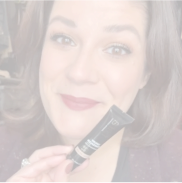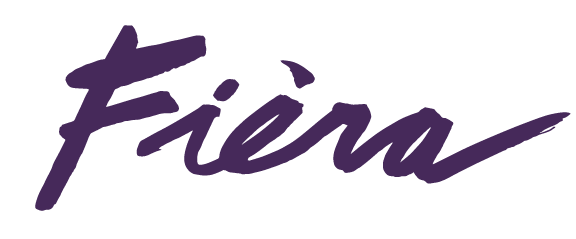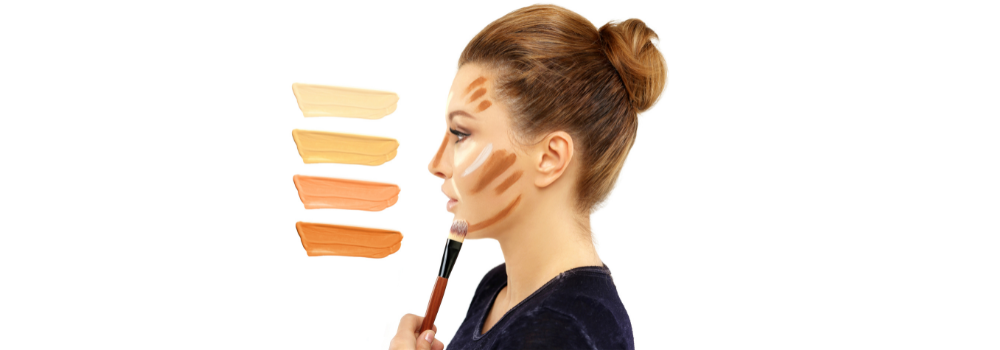Contouring has stood the test of time in the world of makeup, originating as far back as the 16th century among Elizabethan stage actors. Not just restricted to the stage or the big screen, this technique has found its way into everyday makeup routines.
In the past couple of decades, the spotlight has also turned to body contouring—applying the technique to places other than just the face. This trend has prompted the sale of numerous products designed solely for contouring as well as its less intense relative, strobing.
What is Contouring?
Contouring is a technique in makeup artistry that employs cosmetics to refine, augment, and delineate the structure of the face or other body parts. A contouring shade, typically one or two shades darker than the natural skin color, is placed in targeted areas. Think about the hollows of the cheeks, the sides of the nose, and the temples. The aim is to cast a shadow, thereby giving the face a more sculpted appearance.
On the flip side, a highlighter is used to bring attention to areas where light naturally hits the face. For instance, the apples of the cheeks, the bridge of the nose, and the T-zone area comprising the forehead, nose, and chin. The interplay of highlight and shadow can drastically enhance your facial features, giving an impression of depth and dimension.
Necessary Products
Two key products are essential for contouring: a highlighter and a contouring product. The highlighter should ideally be two shades lighter than your skin tone, and the contouring product should be two shades darker.
There are various kinds of products one can use:
- Powder Contour: These usually come in palettes featuring both light and dark shades for highlighting and contouring. It's considered to be easier to work with, particularly for those new to contouring.
- Cream Contour: These products are best for a more intense and well-defined look. However, they can be a bit tricky to work with and may require a more experienced hand.
Selecting a texture that complements your skin is equally important. For example, if you have oily or combination skin, a powder-based contour may work best, while those with drier skin may prefer creams or liquids.
Techniques Based on Face Shapes
Different face shapes necessitate distinct approaches when it comes to contouring.
Oval Face
If you have an oval face, your primary aim might be to add some angles. In this case, it would work best to apply contour to the sides of your forehead and below your cheekbones, starting from your ears to the middle of your cheeks. Don't forget to apply some to your chin to make it appear more angular.
Square Face
For those with a square face, the objective is often to soften the corners and make the face appear a bit elongated. Consider contouring the corners of your forehead and jawline, and don't forget to contour your cheekbones to add depth. Highlight the middle of your forehead and chin to bring attention to the center of your face.
Heart-Shaped Face
Heart-shaped faces usually have a wider forehead compared to the chin. You would focus on contouring the sides of your forehead to make it appear narrower, as well as the area right below your cheekbones, starting from your ears and ending in the middle of your cheeks. Highlighting the middle of your forehead and chin can help bring balance to your facial features.
Round Face
If your face is round, you might aim to create more angles. Apply your contour along the sides of your forehead, below your cheekbones, and along your jawline. You're essentially drawing a "3" on both sides of your face. Make sure to blend well to avoid harsh lines and an unnatural appearance. Highlight the middle of your forehead, under-eye area, and chin to bring them forward.
Your Face is Unique
While the above are generalized guidelines, it's important to remember that your face is unique. Take time to experiment and find what works for you, always keeping in mind that the objective is to enhance your natural beauty.
Step-by-Step Guide to Contouring
Prep Your Face
Let's start with the initial phase: prepping your face. This involves applying a moisturizer followed by a primer. Moisturizer hydrates your skin, creating a smooth canvas for makeup application, while primer ensures that your makeup adheres better and lasts longer. Both these steps set the stage for a successful contouring session.
Choosing Your Preferred Contouring Products
Next, you'll need to pick your contouring and highlighting products. It's generally advised to select a contour color that is two shades darker than your natural skin tone. On the other hand, your highlighter should be two shades lighter. The type of product—whether powder, cream, or liquid—also matters. Powders are often recommended for those with oily or combination skin, as they help in controlling shine. Creams and liquids are typically better for dry or normal skin, as they give a more dewy finish.
Begin Contouring
The actual process of contouring involves strategic placement of the darker and lighter shades. Apply the contour color to areas you'd like to recede or define more, such as the sides of your nose, under your cheekbones, along your jawline, and around the perimeter of your forehead. The highlighter goes on the areas you want to emphasize, like the bridge of your nose, the center of your forehead, and your chin.
Blending
Blending is arguably the most important step in the contouring process. After you've applied the contour and highlight, use a makeup sponge or brush to blend the products into your skin. The aim is to make the transitions between the highlight, your natural skin tone, and the contour as seamless as possible. This avoids the appearance of harsh lines or patches, which can make the contouring look artificial.
Setting Powder
Once your blending is complete, set your makeup with a translucent setting powder. This will reduce shine and help your makeup last longer. If you're looking for added longevity, finish with a few spritzes of setting spray. This creates a protective layer that keeps your makeup in place, ensuring that your beautifully contoured face remains that way throughout the day.
Practice, Practice, and Practice Some More
Different products and application methods may produce varied results, so experimentation can help you find the best match for your skin type and face shape. Over time, as you practice, you'll become more proficient in contouring, allowing you to achieve a look that enhances your natural beauty while adding depth and dimension to your features.
Tips and Tricks for Contouring
Always Start with a Clean Face
When it comes to mastering the art of contouring, there are some additional tips and tricks that can significantly improve your results. One of these is to always start with a clean face, followed by a good skincare routine that includes cleansing, toning, and moisturizing. Proper skincare not only improves your skin's texture but also allows for smoother makeup application.
Use the Right Tools
Choosing the right tools is also essential for contouring. Makeup sponges are excellent for blending cream and liquid products, providing a more natural finish. Brushes can be more precise but require a steady hand to avoid streaks or patches. If you're using powder products, opt for brushes with soft, dense bristles that can both apply and blend the powder seamlessly. Synthetic bristles work better for creams and liquids, as they don't absorb the product.
Don't Overlook Lighting
Lighting is another important factor. Natural light provides the most accurate representation of colors, so if possible, try to do your makeup in a well-lit room with ample natural light. If that's not feasible, LED lighting can be a good substitute as it mimics natural light. Be cautious with yellow or dim lighting, as it can misrepresent how your makeup actually looks.
Understand the Finer Details
In addition to the standard areas where contour and highlight are applied, don't overlook smaller areas like the cupid's bow, the brow bone, and even the collarbone if you're wearing a low-cut outfit. These are subtle ways to add dimension and make your features pop even more.
Don't Ignore Setting Powder
An often-overlooked step is setting your contour. It's advisable to use a setting powder after you've blended your contour and before you apply any blush or bronzer. Setting sprays can offer added insurance to keep your makeup in place, particularly in hot or humid conditions. Choose a setting spray that suits your skin type; matte finishes are ideal for oily skin, while dewy finishes work well on dry or mature skin.
Consider Your Face Shape
It's also beneficial to take your own face shape into consideration. The application technique that works on a round face won't necessarily be effective on a square or heart-shaped face. Investing some time in research and experimentation can help you find the best technique for your specific face shape, which can make all the difference in your final look.
Practice is Key
The more you contour, the better you'll get at it. Each application is a step closer to understanding what suits your face shape, skin type, and color the best. Remember, the most vital part of contouring is blending; it can make or break your look. So, give yourself the time to experiment and learn.
How to Contour with Fièra's Luxury Concealer
As we age, our skin has different needs and requires products that address those concerns. Fièra Luxury Concealer is a full-coverage product that caters to mature skin. It is available in nine shades and is designed to not settle into fine lines or wrinkles. Additionally, it contains active ingredients beneficial to skin health.
Why Fièra Cosmetics Luxury Concealer?
Let's discuss why Fièra Cosmetics Luxury Concealer is worth your attention, especially for mature skin. Most concealers can be drying, but Fièra's formula includes active ingredients beneficial for your skin. It also doesn't settle into fine lines or wrinkles, making it ideal for mature skin types. The range includes nine different shades, allowing for more flexibility in contouring and highlighting.
Basic Contouring Steps Using Fièra
Before diving into the details, it's worth mentioning that you'll need two shades of Fièra Cosmetics Luxury Concealer for effective contouring: a darker shade for creating shadows and a lighter shade for highlighting. Now, let's proceed with the steps.
Creating Shadows
- Underneath Your Cheekbone : Apply a few small dots of the darker concealer just beneath your cheekbones.
- Sides of Your Nose: Add a few light dots down the sides of your nose.
- Edge of Jawline: Apply a thin, smooth line of the darker concealer along the edge of your jawline.
- Temples and Forehead Edges: A few more dots go on your temples and along the edges of your forehead.
Blending
After applying the darker concealer, blend the product into your skin. A firm kabuki brush is highly recommended for this. However, you can use any other tool that you find effective for blending.
Highlighting
- Underneath Your Eyes: Use the lighter concealer to place dots underneath your eyes.
- Above Your Cheekbone: Apply a sweeping line of the lighter concealer just above your cheekbone.
- Front of the Nose and Forehead: Put a few dots of lighter concealer in a straight line down the front of your nose and extend it toward the forehead.
- On the Chin: A single dab of lighter concealer on the chin will do.
Final Blend
Much like the darker concealer, the lighter concealer also needs to be blended well to achieve a seamless look. Again, a firm kabuki brush or your preferred blending tool can be used.
Additional Tips for Mature Skin
Contouring mature skin presents its unique conditions. Therefore, prepping your skin before contouring can be beneficial. Moisturizing adequately and using a good primer can provide a smooth canvas for the Fièra Cosmetics Luxury Concealer. Another suggestion is to use a setting spray after contouring. This helps lock in the contour and highlight, making it long-lasting.
Final Thoughts
Contouring is a timeless makeup technique that, when done correctly, can enhance your facial features remarkably. With the right products and techniques, you can master this art and incorporate it into your daily routine.
Fièra is committed to providing the best anti-aging skincare products for mature skin
Want to empower yourself with resources to look and feel better? Read more articles on our blog.


